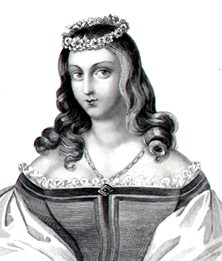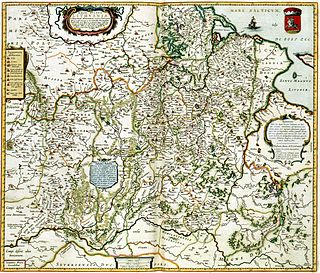Latvian mythology is the collection of myths that have emerged throughout the history of Latvia, sometimes being elaborated upon by successive generations, and at other times being rejected and replaced by other explanatory narratives. These myths stem from folk traditions of the Latvian people and pre-Christian Baltic mythology.

Romuva is a neo-pagan movement derived from the traditional mythology of the Lithuanians, attempting to reconstruct the religious rituals of the Lithuanians before their Christianization in 1387. Practitioners of Romuva claim to continue Baltic pagan traditions which survived in folklore, customs and superstition. Romuva is a polytheistic pagan faith which asserts the sanctity of nature and ancestor worship. Practicing the Romuva faith is seen by many adherents as a form of cultural pride, along with celebrating traditional forms of art, retelling Baltic folklore, practicing traditional holidays, playing traditional Baltic music, singing traditional dainos (songs), as well as ecological activism and stewarding sacred places.

Old Prussians, Baltic Prussians or simply Prussians were a tribe among the Baltic peoples that inhabited the region of Prussia, at the south-eastern shore of the Baltic Sea between the Vistula Lagoon to the west and the Curonian Lagoon to the east. The Old Prussians, who spoke an Indo-European language now known as Old Prussian and worshipped pre-Christian deities, lent their name, despite very few commonalities, to the later, predominantly Low German-speaking inhabitants of the region.
Lithuanian mythology is the mythology of Lithuanian polytheism, the religion of pre-Christian Lithuanians. Like other Indo-Europeans, ancient Lithuanians maintained a polytheistic mythology and religious structure. In pre-Christian Lithuania, mythology was a part of polytheistic religion; after Christianisation mythology survived mostly in folklore, customs and festive rituals. Lithuanian mythology is very close to the mythology of other Baltic nations – Prussians, Latvians, and is considered a part of Baltic mythology.

Saulė is a solar goddess, the common Baltic solar deity in the Lithuanian and Latvian mythologies. The noun Saulė/Saule in the Lithuanian and Latvian languages is also the conventional name for the Sun and originates from the Proto-Baltic name *Sauliā > *Saulē.

Sacred groves or sacred woods are groves of trees and have special religious importance within a particular culture. Sacred groves feature in various cultures throughout the world.
Perkūnas was the common Baltic god of thunder, and the second most important deity in the Baltic pantheon after Dievas. In both Lithuanian and Latvian mythology, he is documented as the god of sky, thunder, lightning, storms, rain, fire, war, law, order, fertility, mountains, and oak trees.
Baltic mythology is the body of mythology of the Baltic people stemming from Baltic paganism and continuing after Christianization and into Baltic folklore.
The Alcis or Alci were a pair of divine young brothers worshipped by the Naharvali, an ancient Germanic tribe from Central Europe. The Alcis are solely attested by Roman historian and senator Tacitus in his ethnography Germania, written around 98 AD.

Birutė was the second wife of Kęstutis, Grand Duke of Lithuania, and mother of Vytautas the Great. There is very little known about Birutė's life, but after her death a strong cult developed among Lithuanians, especially in Samogitia.

Romuva or Romowe was an alleged pagan worship place in the western part of Sambia, one of the regions of pagan Prussia. In contemporary sources the temple is mentioned only once, by Peter von Dusburg in 1326. According to his account, Kriwe-Kriwajto, the chief priest or "pagan pope", lived at Romuva and ruled over the religion of all the Balts. According to Simon Grunau, the temple was central to Prussian mythology. Even though there are considerable doubts whether such a place actually existed, the Lithuanian neo-pagan movement Romuva borrowed its name from the temple.
Medeina or Medeinė, often treated as synonymous to Žvorūnė or Žvorūna, is one of the main deities in the Lithuanian mythology, and is similar to Latvian Meža māte. She is a ruler of forests, trees and animals. Her sacred animal is a hare.

The Prussian mythology was a polytheistic religion of the Old Prussians, indigenous peoples of Prussia before the Prussian Crusade waged by the Teutonic Knights. It was closely related to other Baltic faiths, the Lithuanian and Latvian mythologies. Its myths and legends did not survive as Prussians became Germanized and their culture went extinct in the early 18th century. Fragmentary information on gods and rituals can be found in various medieval chronicles, but most of them are unreliable. No sources document pagan religion before the forced Christianization in the 13th century. Most of what is known about Prussian religion is obtained from dubious 16th-century sources.
Lithuanian Dievas, Latvian Dievs, Latgalian Dīvs, Old Prussian Dìews, Yotvingian Deivas was the primordial supreme god in the Baltic mythology and one of the most important deities together with Perkūnas and he was brother of Potrimpo. He was the god of sky, prosperity, wealth, ruler of gods, and creator of universe. Dievas is a direct successor of the Proto-Indo-European supreme sky father god *Dyēus of the root *deiwo-. Its Proto-Baltic form was *Deivas.

The Christianization of Lithuania occurred in 1387, initiated by King of Poland and Grand Duke of Lithuania Władysław II Jagiełło and his cousin Vytautas the Great. It signified the official adoption of Christianity by Lithuania, the last pagan country in Europe. This event ended one of the most complicated and lengthiest processes of Christianization in European history.

Mindaugas is the first known Grand Duke of Lithuania and the only crowned King of Lithuania. Little is known of his origins, early life, or rise to power; he is mentioned in a 1219 treaty as an elder duke, and in 1236 as the leader of all the Lithuanians. The contemporary and modern sources discussing his ascent mention strategic marriages along with banishment or murder of his rivals. He extended his domain into regions southeast of Lithuania proper during the 1230s and 1240s. In 1250 or 1251, during the course of internal power struggles, he was baptised as a Roman Catholic; this action enabled him to establish an alliance with the Livonian Order, a long-standing antagonist of the Lithuanians. During the summer of 1253 he was crowned King of Lithuania, ruling between 300,000 and 400,000 subjects.

The history of Lithuania between 1219 and 1295 concerns the establishment and early history of the first Lithuanian state, the Grand Duchy of Lithuania. The beginning of the 13th century marks the end of the prehistory of Lithuania. From this point on the history of Lithuania is recorded in chronicles, treaties, and other written documents. In 1219, 21 Lithuanian dukes signed a peace treaty with Galicia–Volhynia. This event is widely accepted as the first proof that the Baltic tribes were uniting and consolidating. Despite continuous warfare with two Christian orders, the Livonian Order and the Teutonic Knights, the Grand Duchy of Lithuania was established and gained some control over the lands of Black Ruthenia, Polatsk, Minsk, and other territories east of modern-day Lithuania that had become weak and vulnerable after the collapse of Kievan Rus'.

Vykintas Vaitkevičius is a Lithuanian archaeologist.

Trees hold a particular role in Germanic paganism and Germanic mythology, both as individuals and in groups. The central role of trees in Germanic religion is noted in the earliest written reports about the Germanic peoples, with the Roman historian Tacitus stating that Germanic cult practices took place exclusively in groves rather than temples. Scholars consider that reverence for and rites performed at individual trees are derived from the mythological role of the world tree, Yggdrasil; onomastic and some historical evidence also connects individual deities to both groves and individual trees. After Christianisation, trees continue to play a significant role in the folk beliefs of the Germanic peoples.

Šventaragis' Valley is a valley at the confluence of Neris and Vilnia Rivers in Vilnius, Lithuania. According to a legend recorded in the Lithuanian Chronicles, it was where Lithuanian rulers were cremated before the Christianization of Lithuania in 1387. Maciej Stryjkowski further recorded that it was the location of a pagan temple dedicated to Perkūnas, the god of thunder. While the legends are generally dismissed as fiction by historians, they have been studied and analysed from the perspective of pre-Christian Lithuanian mythology by Vladimir Toporov, Gintaras Beresnevičius, Norbertas Vėlius, Vykintas Vaitkevičius, and others.











